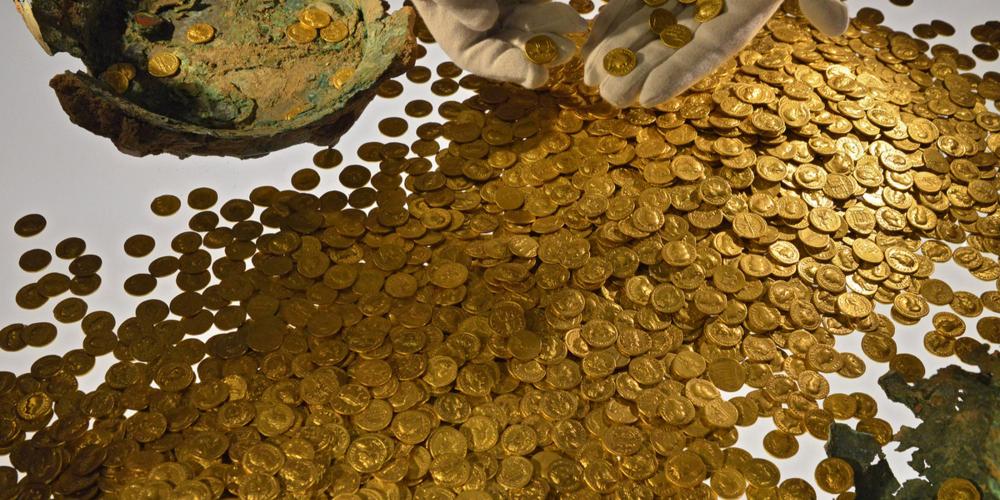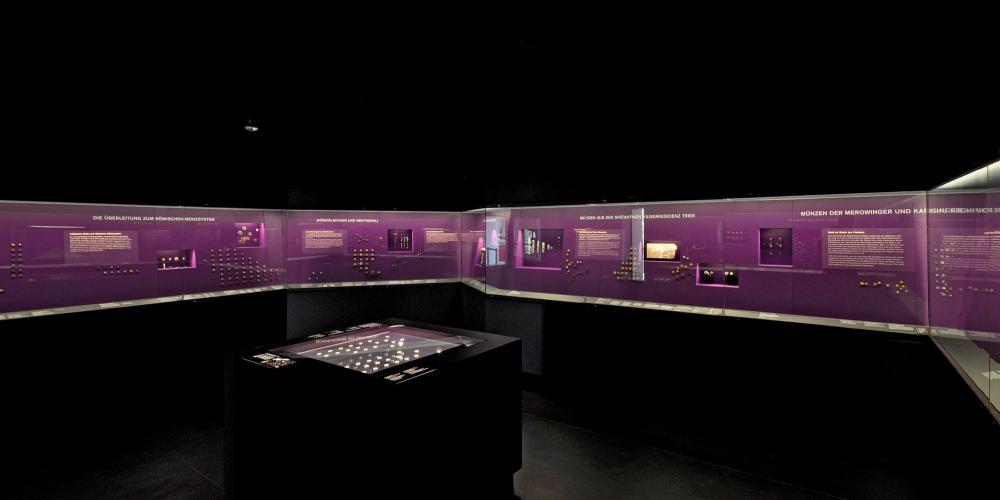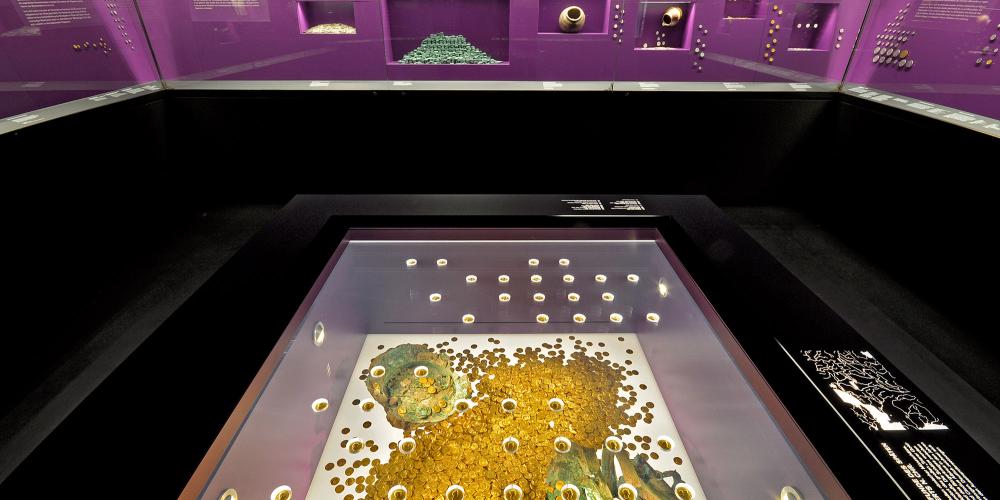The Trier Gold Hoard

The discovery of the Gold Hoard in Trier in 1993 caused quite a sensation. Greater inspection revealed that it was not simply someone's personal fortune but most likely an official treasury. The treasury had been carefully administered and had grown over time. The Hoard equated to the annual salary of around 130 Roman soldiers. The aurei (gold coins) feature a total of 27 emperors, empresses and members of the imperial family, and some are still considered unique to this day.
Why were the coins buried?
The gold coins were buried in a cellar during a civil war in 196 AD. Clodius Albinus had caused a revolt against Emperor Septimius Severus when he appointed his son Caracalla as successor to the throne instead of Albinus. The former administrator of the hoard presumably took the knowledge of the secret stash with him to the grave.
How to view the coins
Today this unique ensemble is exhibited in the coin collection at the Rheinisches Landesmuseum Trier. The state museum is among the largest archaeological museums in Germany and displays a total of 12,000 coins in its exhibition. In addition to archaeological finds, the Gold Hoard presentation room also provides extensive information on the emergence of the monetary system and how ancient, medieval and modern money has been produced.




